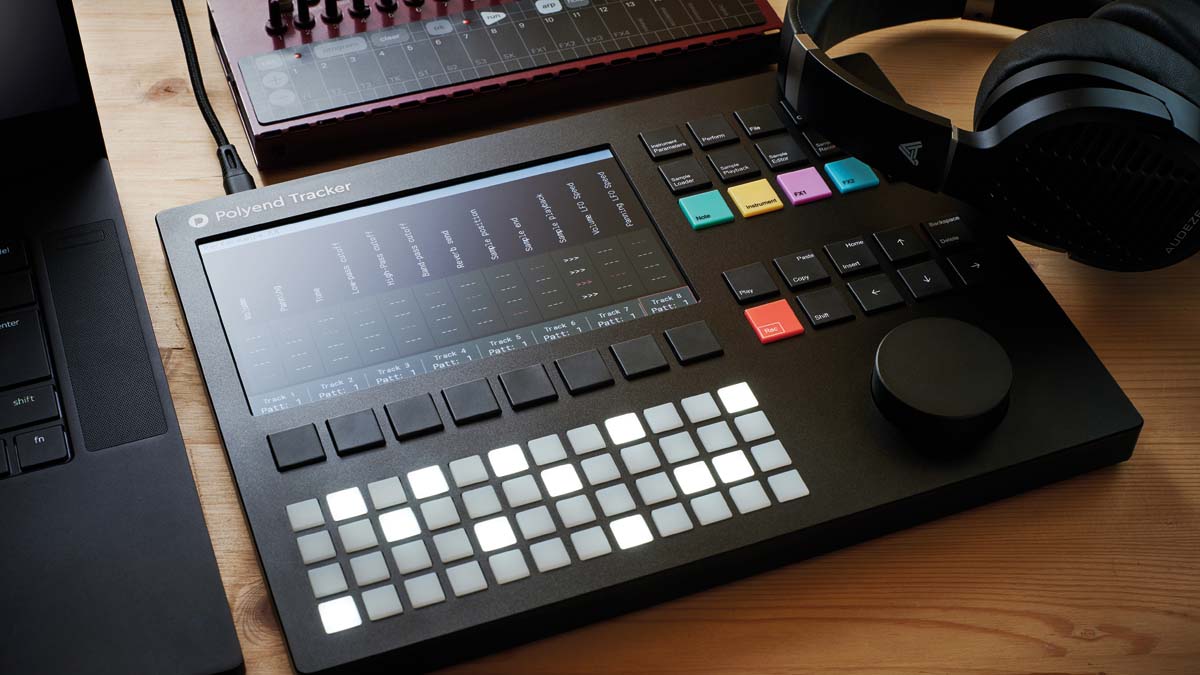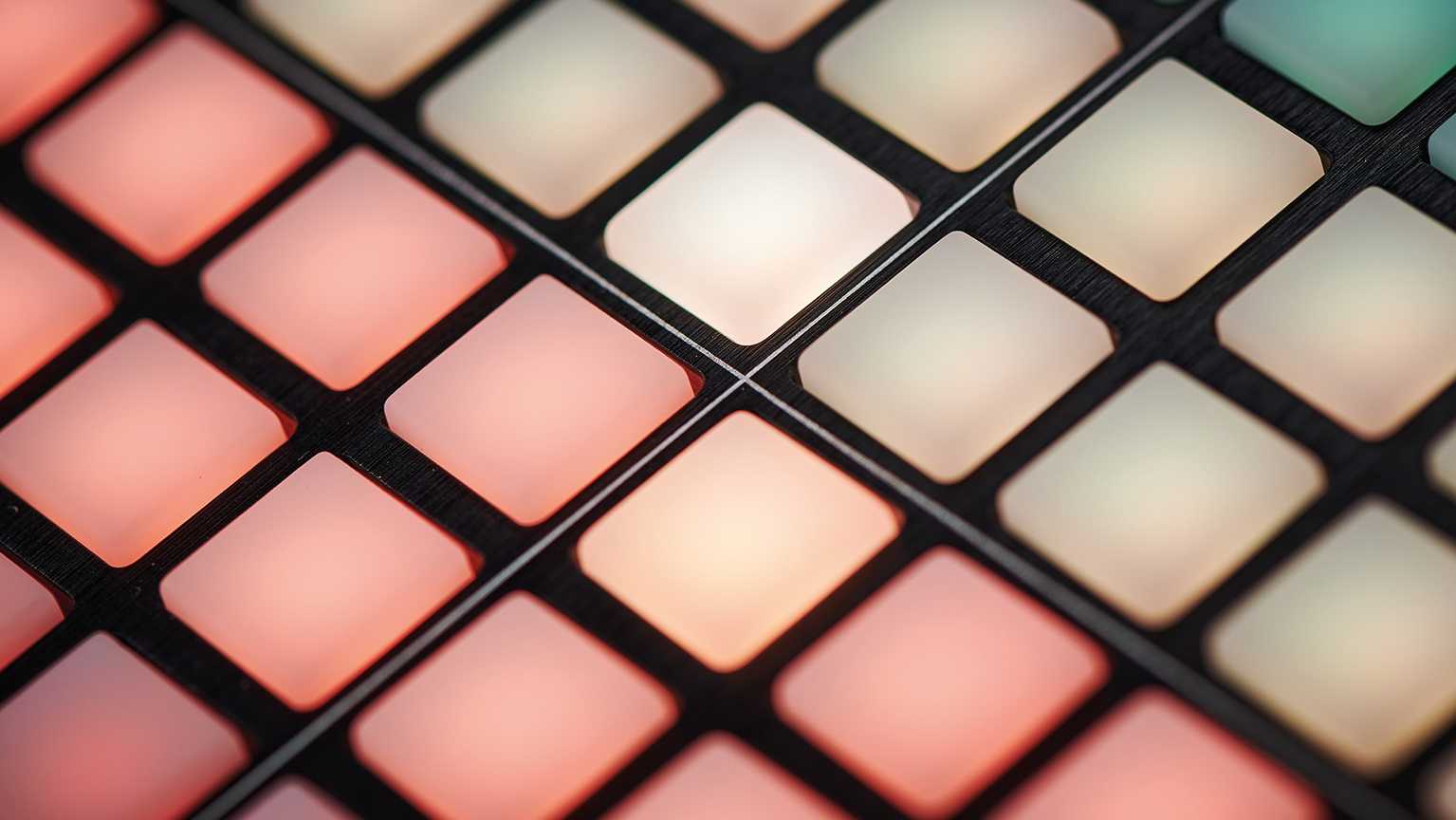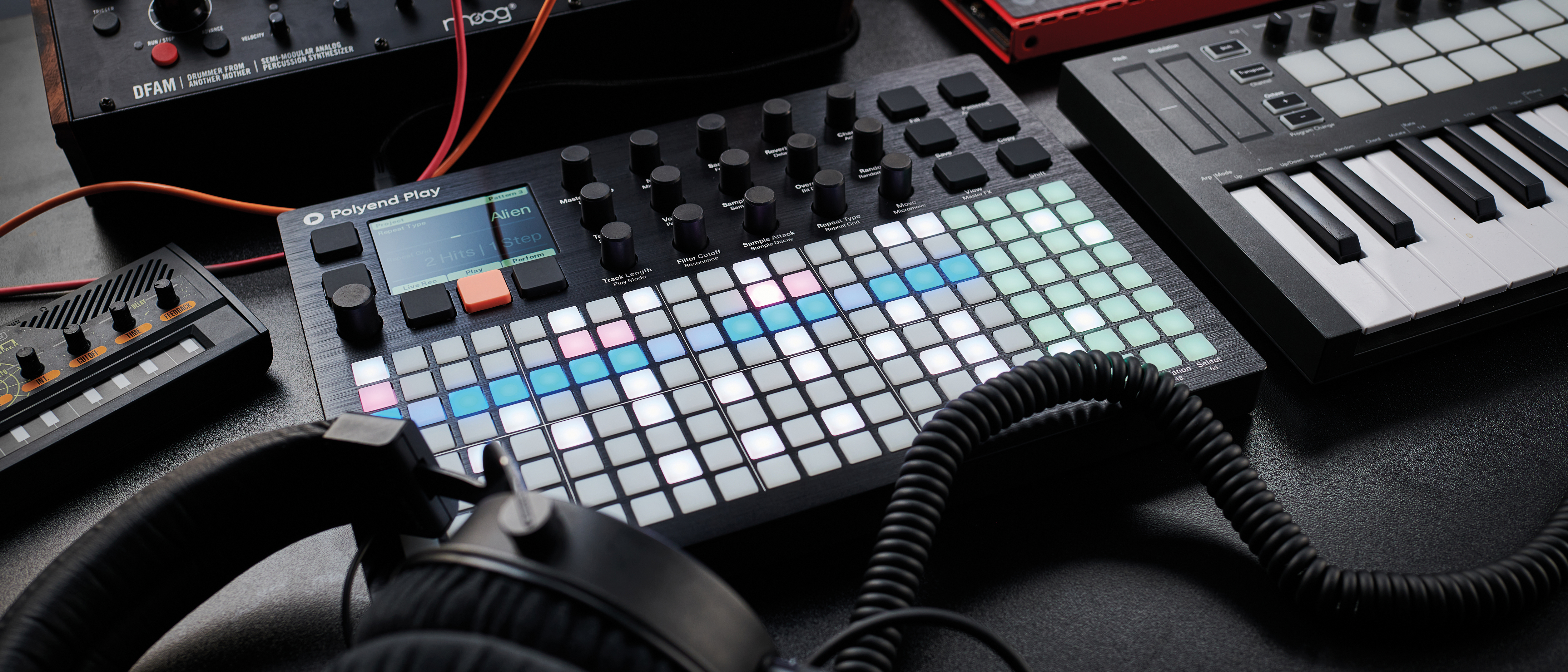MusicRadar Verdict
Play is outgunned by rivals in some of its sample capabilities, but the unique, slick and inspiring workflow shines through above all else
Pros
- +
Powerful sequencing tools that are great for polyrhythms and live performance.
- +
Sleek, portable and USB-powered.
- +
Excellent stock of included sounds/kits.
Cons
- -
Preset-focused reverb/delay are a touch limiting.
- -
Can’t import samples directly via USB.
- -
Sequencer workflow takes a bit of getting used to.
MusicRadar's got your back
Polyend Play: What is it?
Although it might be a bit premature to call something released just two years ago a cult classic, Polyend’s esoteric Tracker is certainly on course to earn the title. Taking cues from software trackers, Polyend’s performance sampler is a bit of an oddity, but if the legions of enthusiastic YouTube videos and forum comments are anything to go by it’s certainly found a dedicated following.
Play, the company’s keenly awaited follow-up, is more of a conventional device than Tracker – for one thing its sequencer runs from left to right, rather than top to bottom – but it still inherits a healthy portion of its predecessor’s leftfield creativity.
This is a sample-based groovebox and MIDI sequencer. The unit itself is the exact same size as Tracker, roughly 30 x 20cm and just over 3cm deep, making it slim and highly portable. As with that predecessor, Play has a single USB port on the rear used both for power – via an included adapter – and connection to a computer or MIDI USB device. Play’s rear panel also features mini-jack ports for the stereo main output, plus MIDI in and MIDI out, all of which can come with included adapters allowing users to connect a stereo pair of jacks to the output and full-sized MIDI connectors.
Unlike Tracker, however, there’s no audio input here. Play features no sampling capabilities itself, either from an external source or internal audio. Sample playback is fairly straightforward too; whereas Tracker offers loop slicing, wavetable and granular modes, Play is a purely one-shot affair. Play also trades Tracker’s sizeable screen for an increased amount of front
panel controls, making for an all-round more hands-on, performance-focused instrument.
The main action happens on the 8 x 20 grid of small, soft pads. This acts as, among other things, Play’s sequencer interface. The left-hand 16 columns control the main step sequencer, while the final four are function pads. As mentioned, the sequencer runs left to right, which is more intuitive than Tracker’s vertical, numerical grid. However, while each horizontal row of pads can, to an extent, be thought of as a sequencer ‘track’, it would be a misnomer to describe Play as a standard eight-track sequencer.

Polyend Play: Performance and verdict
One of the key characteristics of Play is that each step can be assigned its own individual sample and parameter settings. Play is hardly the first groovebox to allow this – Elektron’s various synths and samplers, for example, allow users to automate sound changes for each sequencer step.
Play goes all-in on this concept though. Any new step added to the sequencer, no matter the track, will always apply the most recently selected sample choice and settings no matter what else is around it. If this sounds a little confusing, it doesn’t take long to get used to, enhanced by some smart workflow tools such as a simple one-touch copy and paste function.
Want all the hottest music and gear news, reviews, deals, features and more, direct to your inbox? Sign up here.
There are some ways in which Play treats each horizontal row more like a traditional sequencer track. On the right-hand side, each row has four function buttons that can be used to control every step in a row at the same time. The Select button here allows for the entire row to be edited simultaneously, a little more like a traditional sequencer.

Users can also select multiple steps across different tracks for editing by using the shift key. The function buttons can also be used to mute and solo all the steps on each sequencer row. The final of the four function buttons allows users to create and freely switch between up to 16 variations for each track.
The data input for each step is controlled by the bank of 15 rotaries above the sequencer grid. These are touch-sensitive, so making contact with any control will bring up the associated view on Play’s display. Each rotary controls two related functions – to switch between the primary and secondary you double-tap the rotary or use a pair of buttons along the edge of the display.
The functions of these controls vary between sound design and sequencer triggers. The former elements are fairly straightforward. Alongside sample selection, there are controls for sample pitch, with both chromatic Note and fine Microtuning controls, plus controls for sample level, pan, start and end positions, and attack and decay.
Each step can also be assigned its own settings for a bi-directional resonant filter along with a wonderfully crunchy digital overdrive and bitcrusher. On the effect front, each step can also be programmed with its own send levels to the master delay and reverb (see Master Effects).

The remaining rotaries control additional sequencing functions. The first is a Tempo/Swing control. Swing is always available per track, but can be set globally by selecting all sequencer tracks at once. With one or more individual tracks selected, the tempo control becomes a track speed control, allowing users to set a playback rate by beat division synced to the main tempo.
Next to this is a control for setting the step length for each track. Each track can have its own individual length between one and 64 steps; combined with the track speed parameter, this opens up a huge, flexible array of polyrhythm options. The same control gives access to 35 different play modes that alter the playback order of steps, with options ranging from switching direction of playback to randomising and remixing the order of the steps.
Further controls allow you to apply rolls and repeats, move steps and adjust micromovements – ie nudging individual steps off the grid. There are also two controls for applying variations and randomisations. Chance is used to apply an element of probability to each step. This can control whether the step itself triggers, be used to apply a touch of humanising movement or be targeted at various different sound parameters.
The Randomize parameter works in a similar fashion, although randomisations are only applied while working on the relevant screen – the moment you touch or adjust a different parameter the Randomizer deactivates, making it more of a quick-fire performance tool.

• Polyend Tracker
Polyend’s other performance sampler is a little more esoteric, but has already gained a cult following
• Elektron Digitakt
Elektron’s mid-level sampler boasts onboard sampling and more advanced sound shaping. Play’s sequencing is arguably more fluid and inspiring though
• Arturia BeatStep Pro
BeatStep isn’t an instrument in itself, but this pad-based sequencer shares a number of creative traits with Play’s adventurous sequencing approach
There’s a lot of flexibility from these rotary-controlled parameters alone, but Play adds several more layers of capabilities on top of these still. Foremost is the polyphonic external MIDI sequencing capabilities.
Play features an additional and largely independent sequencer layered over the sample sequencer, including a handy chord mode and CC outputting from the rotaries. This means it’s possible to create multi-track external patterns at the same time as sequencing the internal audio engine.
In all, Play can store and chain up to 128 patterns, each containing sample and MIDI sequences of up to 64 steps plus multiple variations. It’s an impressive amount of functionality and really makes Play appealing as a potential hub for a live setup.
Alongside its step sequencing workflow, Play can also be played and sequenced live, including the ability to live record rotary movements into each sequence. The grid can be played as a pad keyboard, or samples can be played chromatically from an external device. Play has a Scale function too, which allows audio and MIDI sequences to be locked to a preset selection of notes.

It’s also worth giving a mention to Play’s interesting Fill mode. This is similar to Tracker’s auto-fill tool, whereby the device can automatically populate selected sequencer steps based on user-input parameters. Here these come in three forms – Random, which is based on a user-set density, Euclidean, which will evenly divide triggers across the selected steps, and Beat modes, which apply stock, genre-inspired drum grooves, either for a full beat or selected drum types.
The final element of Play is a wonderfully fun Perform mode. In this view, the pad grid switches to control eight colour-coded banks of punch-in effects, ranging from stutters, rolls and repeats to pitch shifts, delay and reverb effects, and overdrive/bitcrush. These effects are applied to selected tracks, and deactivate the moment the user leaves the Perform screen. In this view, users can also make adjustments to the rotary parameters that will reset once Perform is closed.
Master effects
Alongside the per-pad filter and distortion, and the punch-in Perform effects, Play features a series of master effects that can add an extra layer of polish to the overall sound. Two of these are auxiliary effects, the delay and reverb, which have dedicated front-panel rotaries to control send levels for each sequencer step. The slight downside to these effects is that they’re entirely preset-based, which Polyend claim is to avoid slowing users down. While I can see their point, I often found myself wishing for more refined control of the reverb length and the ability to fine-tune delay times.
Faring better are the limiter, saturation and ‘Sound’ effect. This latter element can apply overt stylistic treatments, ranging from bass boost to a muffled underwater effect and faux-telephone sound. It can be a bit much at times but works better than you might think. The limiter and saturation, meanwhile, are great touches, and used together add some serious weight to Play’s sound.

Any weaknesses are offset by the open and inspiring sequencing workflow.
There’s no denying that Play is an exceptionally powerful tool. That said, there are some weak points – the lack of onboard sampling puts it behind many similarly-priced competitors, and some of the sample-shaping tools are a little basic, such as the simple A/D amp envelopes and lack of LFOs.
The lack of flexibility in the delay and reverb is also a little limiting, and the fact that it’s impossible to transfer samples or firmware directly over USB – as opposed to removing the SD card – is a slightly baffling annoyance. That said, a few of these points are compensated for by the fact that Play comes stocked with a generous, quality library of sounds.
For us though, any weaknesses are offset by the open and inspiring sequencing workflow. Particularly when it comes to combining sample sequencing and external gear, Play is potentially unrivalled.
With its slightly unusual workflow, Play will likely click more for some users than others, although I suspect as with Tracker it will also in time inspire an enthusiastic community of evangelists to its cause.
What’s becoming increasingly clear is that Polyend is a brand with a genuine understanding of what makes an instrument inspiring and, crucially, creatively useful. Kudos.
MusicRadar verdict: Play is outgunned by rivals in some of its sample capabilities, but the unique, slick and inspiring workflow shines through above all else.
Polyend Play: The web says
"The hybrid nature of performance controller and sequencer is becoming altogether more common, of course—but Play's embrace of expandability and its potential for real-time, non-destructive pattern manipulation is quite unique."
Perfect Circuit
Polyend Play: Hands-on demos
Polyend
Loopop
Benn Jordan
Polyend Play: Specifications

- Key Features: Sample and MIDI groovebox
- I/O: USB (for power/MIDI), MIDI in and out (via included adapters), 3.5mm stereo main out (stereo splitter included), SD card
- Contact: Polyend
I'm the Managing Editor of Music Technology at MusicRadar and former Editor-in-Chief of Future Music, Computer Music and Electronic Musician. I've been messing around with music tech in various forms for over two decades. I've also spent the last 10 years forgetting how to play guitar. Find me in the chillout room at raves complaining that it's past my bedtime.
